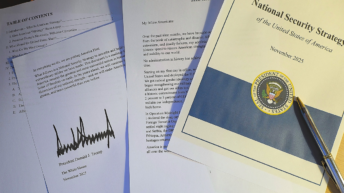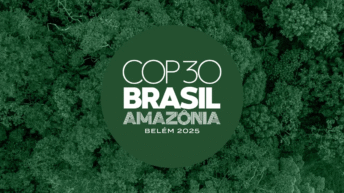
On the backdrop of “Operation Sindoor” the Balochistan Liberation Army (BLA) has continued to make headlines by striking over 51 locations across Pakistan’s Balochistan province as part of its ongoing ‘Operation Herof’. Some of the key areas where these targeted operations were carried out include Kech, Panjgur, Mastung, Quetta, Zamuran, Tolangi, Kuluki, and Nushki.
According to BLA spokesperson Jeeyand Baloch, the targets included “Pakistani military and intelligence installations as a way to test military coordination and readiness for future war”. Further, India and the international community were urged to take “decisive actions” against Pakistan, warning that continued inaction could fuel further violence. “If Pakistan continues to be tolerated, its very existence may lead to the ruin of the entire world,” the group stated, accusing the country of fostering terrorist groups like Lashkar-e-Taiba and Jaish-e-Mohammad. Additionally, dismissing accusations that the BLA is foreign a proxy force, the spokesman pointed out that “The BLA is neither a pawn nor a silent spectator”.
Despite decades of Baloch nationalist movement demanding autonomy and outright independence, these calls have not been heeded by Islamabad. Instead these voices have been suppressed through heavy military actions often in violation of human rights. As such these developments come as a part of a long-running insurgency and separatist attempts in the region caused by historical injustices. including Balochistan’s economic marginalisation and exploitation, coercive integration, and alienation.
Now, as BLA actions and the Free Balochistan Movement grow more coordinated and narratives of statehood gain traction on social media, the idea of a sovereign Baloch republic may get the support and recognition it had long longed for. While this dream of the Baloch people has a long way to go, any recognition or support from the international community could lead to a significant shift in the regional geopolitic, with a devastating impact on Pakistan’s internal stability and politics, amid ongoing tensions with India.
Source: https://www.theguardian.com/world/2024/jan/18/where-balochistan-why-iran-pakistan-strikes
War on Truth and A Call for Liberation
As noted in a previous article in The Diplomat, there is an ongoing war against truthful journalism in Pakistan, particularly in the Balochistan province. According to Reporters without Borders, Pakistan ranks 158 out of 180 in the press freedom indez, which is no surprise given that major media houses are either co-opted by the state or being silenced. Entire regions like Balochistan, Turbat, Awaran, Panjur, and Gwadar are being treated as no-go-zones for national and international media to restrict coverage of the atrocities committed against the Baloch people by the Pakistani military.
Onn 3rd May, 2025 on the occasion of World Press Freedom Day, leaders of the journalist community, including Balochistan Union of Journalists (BUJ) President Khalil Ahmed and Quetta Press Club President Irfan Saeed, highlighted how the media in Balochistan has been facing strict censorship and is not allowed to even publish news of the opposition parties.
Recently, with a series of tweets on social media platform X by Mir Yar Baloch, an advocate for Baloch rights, the Balock Liberation Movement declared Balochistan’s independence from Pakistan. Through those tweets he urged “the Indian government to allow a Baloch embassy in New Delhi and has called on the United Nations to send peacekeeping forces to Balochistan while asking the Pakistani army to withdraw from the region”. These developments have not only brought back international the attention to this neglected region but have highlighted the double standards of Pakistani authorities that have systematically oppressed the Baloch and violated their rights while constantly claiming to stand for the rights of Indian Kashmiris to gain freedom from an allegedly oppressive Indian rule.
Given this new-found spotlight on the issue, one must ask that if there is nothing really to hide why does the Pakistani leadership fear independent international media coverage in its largest province? Perhaps it is an attempt to hide a national failure and cover up double standards based on misguided notions.
Islamabad’s Iron Fist & the Spirit of Balochi Resistance
The people of Balochistan have faced severe economic marginalisation, exploitation, and human rights abuses ever since Pakistan went back on its word and occupied it in 1948. Now, Pakistan’s government, its powerful army, and Chinese assets are facing the fiercest wave of resistance in decades from various Baloch rebel groups, prominent among them being the BLA.
This insurgency, led by the BLA, has not only intensified attacks on Pakistani security forces but has also targeted infrastructure built under the Chinese Belt and Road Initiative (BRI) such as the China-Pakistan Economic Corridor (CPEC) and the Gwadar Port. In response, Islamabad has resorted to military actions and heavy-handed tactics, including extrajudicial killings.
According to data from the South Asia Terrorism Portal, in 2024 there were 774 fatalities (273 civilians, 315 SF personnel, and 186 terrorists/terrorists) including 250 incidents of killings compared to 471 cases of fatalities (160 civilians, 186 SF personnel, and 125 terrorists) and 169 incidents of killings in 2023, marking a rise of 64.33 per cent.
Interestingly, despite widespread violence, women too have been at the forefront of this resistance movement, in reaction to the Pakistani army’s forced ‘disappearances’ of Baloch men and decades of economic exploitation and underdevelopment. In addition, with the Pakistani leadership distracted after Operation Sindoor, recent reports suggest that the Baloch rebels have intensified their attacks on the Pakistani forces in Quetta, where they reportedly hoisted the Baloch national flag.
Discontent of the Balochi People:
Despite repeated attempts by Pakistan’s government to portray the unrest in Balochistan province as a result of internal power struggles among tribal chieftains, the harsh military actions especially against women, and extrajudicial killings and enforced disappearances speak otherwise.
The people of Balochistan have been systematically excluded from meaningful participation in economic and political activities in the region as a result of decades of military rule and centralised governance. As a consequence, the entire province, despite its rich natural resources, such as coal, copper, gold, and natural gas remains underdeveloped.
The natives attribute their pitiful living conditions to Pakistan’s forceful integration of the province and decades of economic exploitation. However, little heed is paid by both Pakistan and the international community to support the welfare of the Baloch people. Additionally, adding to their woes, massive infrastructure projects such as the China-Pakistan Economic Corridor (CPEC) and the Gwadar Port project which is part of it, were launched without proper stakeholder consultation and led to mass worker migration into the Balochistan province from other parts of the country, prompting concerns among locals about demographic shifts and indigenous community rights.
As a result, getting no official recognition of or response to their initially peaceful protests, the Baloch rebel groups have resorted to coordinated and targeted coercive tactics such as the recent Operation Herof, the suicide bombing carried out at Karachi University, the Jaffar Express train hijack and the bombing of a bus near the Dasu hydropower project as way to deter Chinese workers and investments from coming into the region and to fight back against Pakistani military forces.
Therefore, there is a growing concern in the Pakistani government and in Beijing about Pakistan army’s inability to provide security to Chinese personnel working on various CPEC projects and maintain control of the sprawling region which is geographically and topographically comparable to Afghanistan and is therefore very suitable for guerilla warfare..
What is next?
Despite all the support on social media for a free Balochistan, Islamabad will not give up on Balochistan, especially without a fight given that the region accounts for nearly 44% of Pakistan’s landmass and holds billions worth of largely untapped mineral resources.’ On the other hand, the low population density in the province makes it unlikely that the Baloch fighters would stand a chance in a direct confrontation with the Pakistani military short of massice support from other powers in the neighbourhood.
As a result, the prospect for the emergence of a new state out of a division of Pakistan remains slim. Yet, two unexpected circumstances could make it more plausible. The first would be an intervention of the international community through the UN due to the poor state of affairs of the Balochi people and the second might result from inadvertent collaboration between non-state groups like Tehreek-e-Taliban Pakistan (TTP) and the Balochistan Liberation Army along with other rebel groups across Pakistan. Coordinated action by such a coalition could cause a devastating blow to Pakistani armed forces as a result of multiple overlapping attacks forcing the PAF to fight various insurgencies at once..
In any case, if such an escalation is to take place in months to follow, regional players like China and Iran too will be drawn into this equation given China’s strategic investments and Iran’s shared borders. Therefore, in the context of the ongoing India-Pakistan standoff, any such development would not only risk raising the tensions between Pakistan and India but could pose to the entire South Asian region a critical security dilemma.






Add comment